#Ancient China
Explore tagged Tumblr posts
Photo
Hanfu in the style of the Tang dynasty.









chinese hanfu by 清歌鸣玉
#A Full Moon & Blooming Flowers#actress#cdrama#chinese drama#chinese historical clothing#chinese clothes#chinese historical clothes#chinese actress#cdramaedit#chinese actor#hanfu aesthetic#chinese aesthetic#china#cdramasource#chinese drama aesthetic#chinese history#ancient china#ancient chinese clothes#ancient chinese clothing#chinese clothing#chinese aesthetics#hanfu aesthetics#hanfu#tang dynasty#tang dynasty aesthetic#tang dynasty hanfu#tang dynasty clothes#tang dynasty clothing#chinese fashion#guzhuang
252 notes
·
View notes
Text

Sculpture with rooster head, was found in a tomb at Gaochang, a Tang city on the edge of the Taklamakan Desert, 7th-10th century, Tang Dynasty, China.
6K notes
·
View notes
Text



Ink stone in the form of a turtle, China, 6th-7th century
from The Metropolitan Museum of Art
6K notes
·
View notes
Text
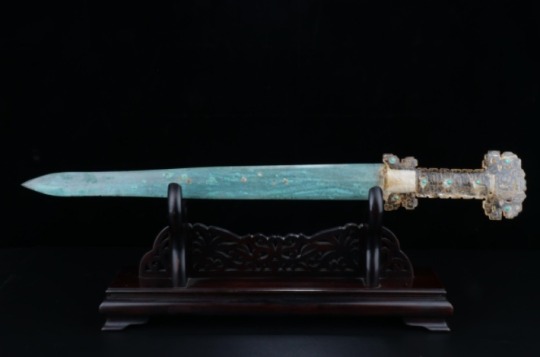
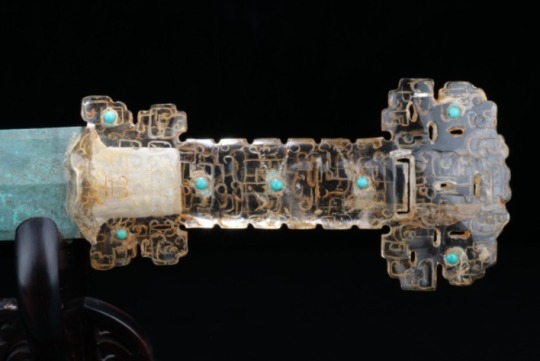
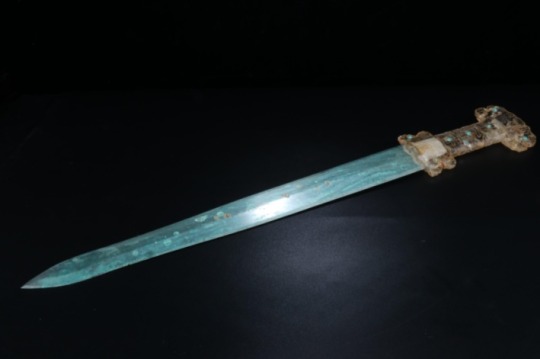
Chinese Bronze Sword With An Inlaid Rock Crystal, Turquoise and Gold Hilt Warring States Period, Circa 4th - 2nd Century B.C.
#Chinese Bronze Sword With An Inlaid Rock Crystal Turquoise and Gold Hilt#Warring States Period#Circa 4th - 2nd Century B.C.#bronze#bronze sword#ancient artifacts#archeology#archeolgst#history#history news#ancient history#ancient culture#ancient civilizations#ancient china#chinese history#chinese art#art
6K notes
·
View notes
Text
We'll enjoy the cherry blossoms together...






How to Photograph Hanfu
via Si Xu Guo Feng
#A Full Moon & Blooming Flowers#actress#cdrama#chinese drama#chinese historical clothing#chinese clothes#chinese historical clothes#chinese actress#cdramaedit#chinese actor#hanfu aesthetic#chinese aesthetic#china#cdramasource#chinese drama aesthetic#chinese history#ancient china#ancient chinese clothes#ancient chinese clothing#chinese clothing#chinese aesthetics#hanfu aesthetics#hanfu#tang dynasty#tang dynasty aesthetic#tang dynasty hanfu#tang dynasty clothes#tang dynasty clothing#chinese fashion#guzhuang
69 notes
·
View notes
Text
Chinese Mythology- Ne Zha
In case you forgot, there’s a little (well, not-so-little) country in between Russia, India and the sea near Australia called China. She’s pretty well-known for being big, red, and old.
As well as other things, but that’s all pretty new and not what we’re talking about here, I draw the line at those topics.
China is like the grandma of most Asian countries within the Sinosphere (area of influence that spread Chinese culture through the Silk Road, Tang dynasty diplomats and ideologies like Confucianism and Taoism and occasionally Buddhism).
As such, Chinese mythology and lifestyle practices are very deeply rooted in cultural beliefs across Asian countries like Japan, South Korea, Malaysia, Singapore, and Vietnam.
This isn’t a post about the history of China. Well, it is, but the history of China is some 10,000 years of culture and 4000 years of recorded history, and I have neither the time nor the patience to go through all of it. To be quite honest, about 70% of it is irrelevant to even the lives of Chinese people.
What I’d like to talk about, instead, is some Chinese culture and mythology.
Many of you might have heard of the Journey to the West, or more specifically the Monkey King Sun Wukong. Undoubtedly he’s probably the number one IT boy in China, our biggest cultural icon and representative myth, and his name is synonymous with power, defiance, and badassery.

You may have seen him featured in the recent hit game, Black Myth: Wukong!
Much of Wukong’s story involves his various shenanigans in his attempt to go to the West and retrieve Buddhist sutras with the monk Xuanzang and several other eclectic and iconic characters. However, Wukong’s history is not as well-known. In fact, much of his early days were spent in constant battle with the Heavenly Court.
That is what I want to talk about: the Heavenly Court. Essentially China’s pantheon. Wukong is so well-known that I feel it’s unnecessary for me to add any more commentary beyond woah, he is so cool, and other people probably have made enough content about him that anything I could add would be 画蛇添足 or paint feet on a snake (a Chinese idiom that means to stop adding useless details that don’t make any sense or serve any purpose).
Regardless.
China, beyond just Wukong, has an enormous selection of mythology involving gods, spirits and immortals as well as their battles against demons and monsters. These stories aren’t as well-known outside China but also feature prominently in what makes up the Chinese mindset. Having said that, here’s my attempt to inspire someone to make a Dragon Ball equivalent that doesn’t feature Wukong.
___
I figured now would be as good a time as any to start with 哪吒三太子,or the Third Prince Ne Zha, since recently the Ne Zha 2 has smashed some records and brought the myth of Ne Zha into more prominence.

By the way, go watch this movie! I'll gush about this later, but it's super good.
As with most everything in Chinese history and mythology: overly-long exposition and background is always needed. In the 16th century, two dudes got together and decided to record the fall of the Shang Dynasty and the rise of the Zhou Dynasty in a novel. Being dramatic, they romanticized the historical tale and added a lot of pizzazz, including spirits, monsters, and gods. This tale is now referred to as 封神演义,or 封神榜: The Romance of the Inauguration of the Gods, or more commonly translated as Investiture of the Gods.

This story serves as the basis for much of Chinese mythology and storytelling. Think of the Iliad or the Odyssey.
Ne Zha is a character in Investiture of the Gods. He’s not a key character in the main plot, which centers around King Zhou of Shang (who ironically rules over the Shang Dynasty and not the Zhou Dynasty, which uses a different Zhou pronounced differently in Chinese). However, he’s probably more famous than King Zhou is, just because he’s so fun, and also he’s featured very prominently in many of the stories we tell kids.
According to the Investiture of the Gods, Ne Zha was born during the Shang Dynasty under the rule of King Zhou. He eventually becomes part of the rebel faction that overthrows King Zhou of Shang and establishes the Zhou Dynasty. For now, though, he is just a kid. His homeland is called Chentang Pass.
In fact, Ne Zha was born with hacks. He’s the incarnation of the 灵珠子, or the Spiritual Pearl, a ball of condensed spiritual energy. As such, he’s pretty OP from birth.
He has two older brothers who are already immortals, called Jin Zha (which means Gold… Zha) and Mu Zha (which means Wood Zha) and his parents wanted five sons named Gold, Wood, Water, Fire and Earth, representing the five elements, with Zha as a suffix.
However, in popular culture, it’s known that Ne Zha, originally Fire, absorbed his brothers Water and Earth in the womb. Because of this, his mother, Lady Yin, is pregnant with him for over three years- which really sucks. When he’s born, he manifests as what looks like a big meatball.
His father, Li Jing, who’s a very high-ranking military general, freaks out and tries to stab him, but he pops out of the meatball as a fully-formed child, and is bestowed the name Ne Zha, literally: That Zha, since he’s three Zha-s in one. Kind of funny.
Ne Zha, since he’s OP, could talk and walk from birth and skipped the baby stage and went right to infant. He was taken as the disciple of 太乙真人, or Realized One of Yin and Yang. We’ll call him Master Taiyi for simplicity. He gets two cool weapons: 混天绫, the Skyblinding Sash, or a sentient moving red ribbon similar to Doctor Strange’s red cape, and 乾坤圈, the Ring of Heaven and Earth, a gold size-changing ring.
Ne Zha is still a human kid, despite being super OP, so when he’s little he asks his mom if he can go out of Chentang Pass to play. She’s like, sure! What’s the worst that can happen!
Oh boy.
Ne Zha wanders for a bit, then decides to take a bath in a river and uses the Skyblinding Sash as a towel. Basically the equivalent of using a tactical nuke to squish an ant. This powerful weapon being used as a towel sends so much energy through the stream that it literally reaches all the way to the East China Sea.
The Dragon King of the East China Sea is called Ao Guang, and he’s also got three sons. In the most well-known Ne Zha movie from 1979, he looks like this:
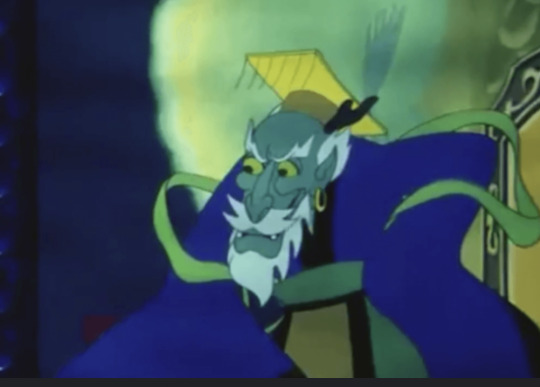
Ao Guang is like, what the fuck? He sends a yaksha, a mischievous water spirit, to check things out (no, not the yaksha you're thinking of.)
Ne Zha basically makes the ancient Chinese equivalent of a your mom joke to the yaksha, who gets super offended and tries to fight him. Then the yaksha gets his ass thoroughly kicked by a seven-year-old, who uses the Ring of Heaven and Earth to basically bash his head in. Yikes.
Ao Guang’s soldiers report this to him, and he’s very troubled by his lackey’s violent end at the hands of China’s worst iPad kid. Ao Bing, who is Ao Guang’s third son, volunteers to go beat up this seven-year-old kid, and is like, I’m the mighty third dragon prince of the East China Sea, there’s no way this toddler can beat me!
Not only does Ne Zha beat Ao Bing, he beats him so badly that he ends up pulling Ao Bing’s tendons out to make a belt for his dad Li Jing. Ao Bing probably died a staunch advocate for birth control. Ne Zha maybe needs some therapy.
Regardless, when Ao Guang hears his precious baby son has been killed rather painfully, he freaks out and goes to complain to Li Jing. Ne Zha is like, oops I killed your son, he was weak anyway, maybe you should train your next kid to be less pathetic, and Ao Guang is like you son of a bitch I’m reporting you to the Jade Emperor!
The Jade Emperor, by the way, is the leader of the Heavenly Court. In Chinese mythology, unlike many religions, being a god doesn’t necessarily mean you’re a good or virtuous person, it just means you got a promotion. Essentially it’s like being a government worker.
There is sometimes discussion on whether the Emperor in the myth is the Heavenly Emperor or the Jade Emperor. They're usually considered different people, with the Jade Emperor being an underling of the Heavenly Emperor, but the exact details get foggy. For the purposes of storytelling, I will assume the Emperor in this story is the Jade Emperor.
Ne Zha says, oh shit what do I do, and goes to his Master Taiyi for help. With an invisibility spell Master Taiyi gave him, he goes to Ao Guang’s house and kicks his ass.
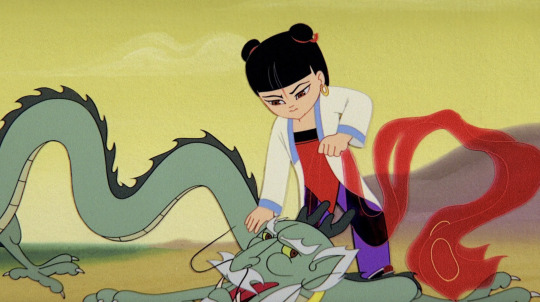
Ao Guang, feeling thoroughly wronged, gathers the other three dragon kings of the North, South and West China Seas respectively and decides they’re going to sue Ne Zha and his family in front of the Jade Emperor.
Lady Yin, Ne Zha’s mom, tells him to chill the fuck out and sits him in their house’s backyard. Ne Zha, thoroughly bored, decides he’s going to do some archery practice with some fancy bows and arrows, which are all inscribed with their family name.
He uses the literal Emperor’s bow and arrow, which were stored there for safekeeping and were unliftable like Thor’s hammer or Excalibur, and casually shoots an arrow up into a cave and kills the disciple of a lady named 石矶娘娘 Lady Stone Spirit.
Lady Stone Spirit kidnaps Ne Zha’s dad after recognising the name on the arrow, and Li Jing is like, yo I’m nowhere strong enough to use that bow and arrow, let me go back home so I can find the true culprit.
Eventually they find out it’s Ne Zha, and Ne Zha flips on Lady Stone Spirit. Master Taiyi eventually kills Lady Stone Spirit for him after Ne Zha loses his weapons.
Master Taiyi then says, oops, remember Ao Guang, that dragon king you pissed off? Well, he’s back and he’s pissed, and he’s got the Jade Emperor on his side. Ao Guang vows he’ll take revenge for his son and his dignity on Chentang Pass and Ne Zha’s parents.
Li Jing, who’s a bit of a dick father, is royally pissed off at Ne Zha. He’s always been very strict on Ne Zha, and has never liked him much, and basically tells Ne Zha to go fuck himself. Ne Zha, who’s mischievous but responsible, decides he’s going to save his family.
In quite possibly the most gruesome children’s tale you’ve ever heard, in order to pay his parents back for birthing him, he cuts all the flesh off his own bones and then cuts his own bones up as penance and to satisfy the dragon king’s wrath. Metal.

Excuse this blurry image- it's hard to find the exact scene in 4k.
Ne Zha’s wandering spirit tells his grieving mother to build him a temple and try to get him a new body, so she does. The temple goes viral, and Li Jing finds out and smashes everything. Ne Zha is like, what the fuck was that for? Now father and son properly hate each other.
Master Taiyi, this story’s MVP, builds Ne Zha a new body out of lotus roots, and he is reborn in a lotus flower. That’s why he’s sometimes called Ne Zha the lotus prince, and why he’s commonly associated with lotus flowers and lotus roots.
Master Taiyi gives him two new weapons: the 火尖枪, Fire-tipped Spear, a spear that shoots fire, and the 风火轮: Wheels of Wind and Fire, which are basically flying roller skates in the shape of two gold wheels.
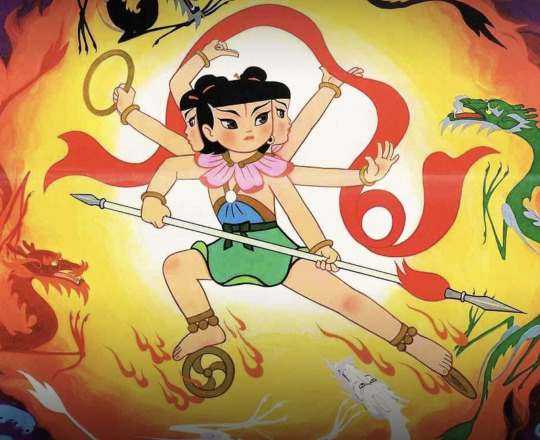
Look at that, so fashionable.
Ne Zha tries to go and beat up his asshole father, and Li Jing quickly realises he’s about to get his ass kicked by his pissed-off deified son. Remember when I said Ne Zha absorbed his brothers Water and Fire in the womb?
Because of this, he can now manifest four more arms and two more heads whenever he wants to become 三头六臂哪吒, Ne Zha of Three Heads and Six Arms. Sick.
The Jade Emperor decides enough is enough after seeing Ne Zha beat his dad up a million times. He goes to the Buddha for help, and the Buddha gives Li Jing a mini pagoda which can trap any demon, monster or spirit within it. Li Jing becomes a deity referred to as the Pagoda-Bearing Lord, and Ne Zha is forced to chill out on the patricide.

This is how the tale is known in popular culture, mostly because of a 1979 movie, produced by Shanghai Animation, which changed the original tale quite a bit. I've been using many images from the 1979 Ne Zha.
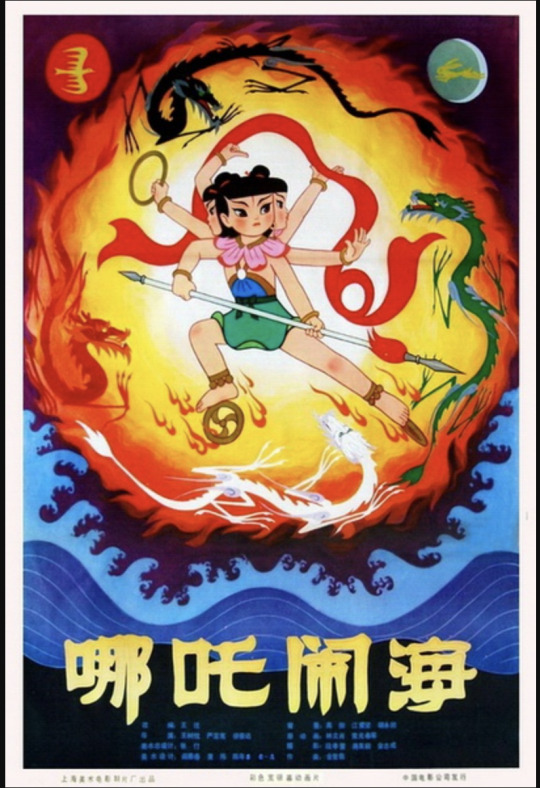
Movie name: Ne Zha Conquers the Sea, otherwise known as Murder Toddler Terrorizes Local Aquatic Ecosystem
For one, in the movie, Ao Guang and Ao Bing are evil oppressors who eat the children of Chentang Pass. Additionally, details are known differently across different iterations of the myth. For example, in Journey to the West, Ne Zha gets his name because it’s literally written on his hands when he’s born.
Since Ne Zha flies around so quickly on his Wheels of Wind and Fire roller skates, people sometimes see him as a patron deity of racing. If they ever make another Fast and Furious they should give him a cameo.
He is so famous that he’s had like a billion animated movies, stage plays and children’s books written about him. Traditionally, he’s depicted as a kid about seven to ten years old, on his roller skate wheels, holding his staff, with his ring turned into a gold bracelet he wears on his wrist and his red sash flying behind him. He has quite the iconic hairstyle: two space buns!
He’s such an iconic figure in Chinese culture: recent media has included him in many iterations.
Gaming fans will recognise him from Black Myth: Wukong as the aura-farming red fire dude with sick eyeliner and space buns.
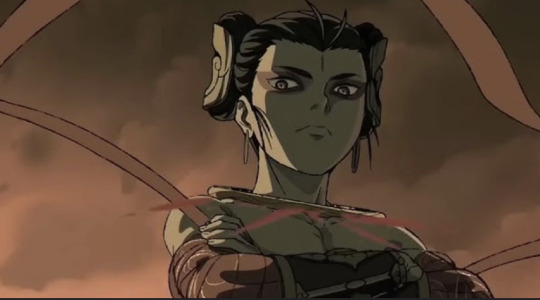
I am not gonna lie this is probably the coolest design of Ne Zha I've ever seen.
The most iconic version of him is probably the 1979 version, though the recent Ne Zha movies from 2019 and 2025 are arguably just as popular now.
There was a 2021 movie called New Gods: Nezha Reborn that is a separate adaptation from Ne Zha 2019 and Ne Zha 2 2025, which was kind of a mid movie but worth a watch.
Several of the adaptations of Ne Zha that have become iconic:

Ne Zha 2019 ^ in his child form


Ne Zha from Fei Ren Zai (非人哉), a comedy series about mythological characters in modern China ^

The Legend of Ne Zha from 2003, a children's TV series ^
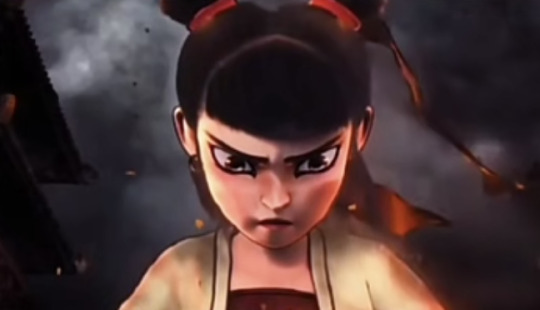

Child and Adult (reincarnated in modern world) versions of Ne Zha in 2021 New Gods Reborn: Ne Zha ^
Sometimes though he’s depicted as a teenager. All in all, since he died young, he’s generally never seen as an adult. Occasionally you’ll see him described as male body with a female face, basically meaning he’s super cute. Note that this doesn’t mean transgender or nonbinary as it’s often known in English, which was not a concept in ancient China.
Oftentimes the media involving him will include jokes of him being mistaken for a girl because he’s a kid with a pretty face.
Eventually Ne Zha becomes an official of the Heavenly Court, a marshall in the army. As I mentioned, he fights for the eventual King Wu of Zhou who overthrows King Zhou of Shang and creates the Zhou dynasty, making him a good guy despite his… concerning childhood.
Writing the entire myth out in English makes Ne Zha seem like a psychopath from birth, but his story is honestly more about a kid causing shenanigans and being forced to pay for it tragically. He’s really quite a victim, if you can believe it. Imagine a toddler born with Hulk-strength who accidentally smashes a few vases and is beaten for it.
Ne Zha 2019 was super popular, and without spoiling too much, Ao Bing became a super polite and likeable young master instead of the classic villain character he is, and aside from being HOT, he and Ne Zha became friends instead of plucking tendons. No tendon-plucking involved. They also change Ne Zha’s story quite a bit, but not enough that he becomes unrecognisable.

Ne Zha 2019 promotional poster ^

This is Ao Bing (the third dragon prince) in the 1979 movie as a villain.


In contrast, this is Ao Bing from Ne Zha 2019 and 2025. Quite the difference, right?
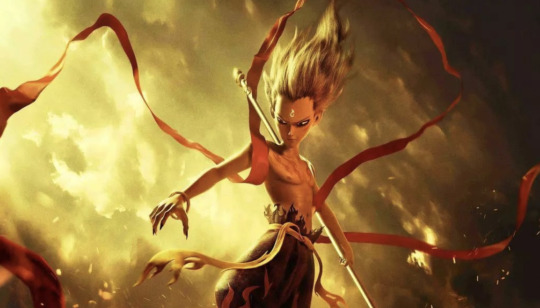
Adult Ne Zha from the Ne Zha 2019 movie
Ne Zha 2, released in 2025 and currently still airing, is now the eighth-highest grossing movie of all time and China’s biggest-ever film. It’s genuinely quite an incredible film, and is worthy of being the biggest animated movie of all time.

I recommend everyone go watch it even if you don’t know Chinese: it’s super funny and the visuals are astounding. Obviously it’s not perfect, and there are a lot of problems with it, but I don’t know, I’m still a big fan. For being made on such a small budget, it somehow manages to outdo Hollywood animation on sheer spectacle. If you can get IMAX tickets, get them!
If there is no other reason, watch the movie for Ao Guang, Ao Bing's dad. Remember the fugly old dragon from the 1979 version?

Well, this is him now. Talk about a glow-up. No joke, when he appeared on screen the entire movie theatre gasped out loud.
By the way, if you were wondering where Ne Zha falls on the timeline in relation to our friend Wukong, Ne Zha was born several thousand years before Wukong burst out of his rock. As such, when Wukong encounters him and *ahem* kicks his ass *ahem*, Ne Zha is already a deity working for the Heavenly Court.
I hope after reading this incredibly-long post, you learned something new about Chinese culture and our favourite lotus root, Ne Zha!
#chinese mythology#ne zha#ne zha 2#chinese#mythology and folklore#chinese culture#animation#ancient china#china#nezha 2025#ao bing#nezha 2019#chinese animation
604 notes
·
View notes
Text









Old Chinese houses are an inexhaustible creative space in terms of wooden interiors. To me, something alike is associated with childhood memories of a countryside house in Zhejiang.
Photo: ©遗产君
#ancient china#chinese culture#chinese history#chinese architecture#ming dynasty#qing dynasty#old china#chinese customs#wooden architecture#wooden buildings#wooden interior#vintage interior#interiors#interior design#interior architecture#interior#interior decor#interior inspiration#woodworking#wood carving
1K notes
·
View notes
Text
first day as a small-town sherif and you discover that some of the convicts you're transporting managed to escape in the night and since the penalty for letting prisoners escape is death, and the penalty for being late because you were looking for escaped prisoners is also death, you decide to free ALL of them and go hide out in the wilderness for a bit, except the convicts are super grateful so they make you their leader and it turns out they're decent guys who were exploited by a tyrannical government, so long story short you're crowd-sourcing for a peasant uprising and would anyone like to chip in?
3650th day and due to a series of unforeseen events you are now the emperor and founder of the han dynasty.
#ok this is the LAST time i exploit this format i swear#liu bang#Emperor Gaozu of Han#history meme#ancient china#second century failson -> sherif -> warlord -> emperor pipeline#epilogue: first year as the founder of the Han Dynasty.#you spend most of your time cussing people out and sleeping with your bf.#you are a huge improvement from the last guy so the country enters 400 years of peace and prosperity.#in case anyone was thinking “haha 2nd cent warlord is so wacky” chinese history is literally just Like That#second century warlord
9K notes
·
View notes
Text
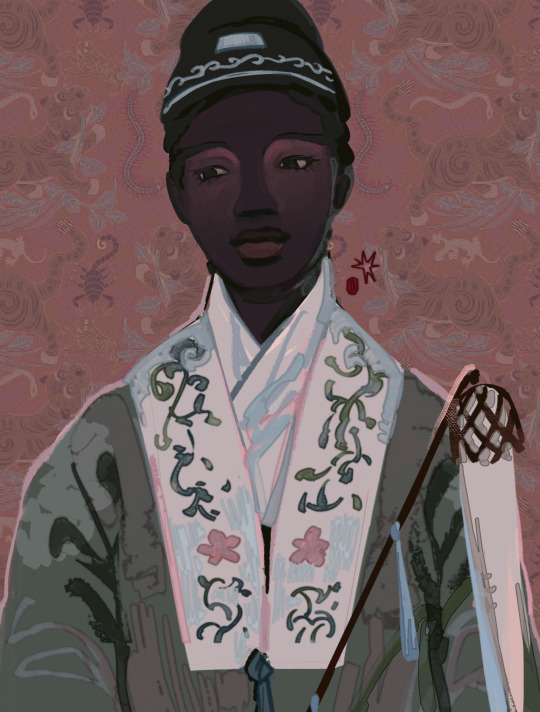
#yix gallery#digital art#ancient china#chinese eunuch#hanfu art#chinese art#ming dynasty#peking opera#kyu
1K notes
·
View notes
Text
When you realize these two are the polar opposites!


Both influential figures from two great poems of their time that shaped generations and generations of their culture (China and Greece respectably) and arguably very influential and inspiring figures for bravery, heroism and glory.
They definitely are two characters with plenty of stuff in common such as the fact that they are posed to sigh sing and mourn (the difference is that Mulan mourns her father's upcoming fate in the Ballad of Hua Mulan while Achilles sighs and moans for the death of Patroclus), both figures also known for fighting at least a decade in a war (Mulan fought for 12, Achilles for 10) and many other parallels that they are way too similar.
However seeing their stories side by side they totally are polar opposites too! And here are some basic spots!
One is a woman, one is a man
One dressed up as a man, one dressed up as a woman
One did it to go to war, the other did it to avoid it
One was never discovered, the other was
One wanted to protect her father, the other was protected by his and his mother
One cut her hair to fight, the other to mourn
One didn't mourn a loved one at the war, the other one did
One didn't desire glory and fame, the other lived for it
One survived the war, the other didn't
One is part of a ballad poem influential to the east, the other from an epic poem that shaped the west
Like...please tell me I am not the only one who noticed these and I am not the only one who is weird nerd! XD
#greek mythology#chinese legends#tagamemnon#homeric poems#the iliad#odyssey#homeric epics#achilles#hua mulan#random thoughts#thoughts from the void#parallels in legends#random post#parallels between legendary figures are scary sometimes!#ancient china#ancient greece#the ballad of mulan
218 notes
·
View notes
Text

The Consort of Peace
A Wang Zhaojun Megop AU
��Because of a sketch I left the Han capital, Joltingly betrothed into the Khan's palace. The sound of nomad pipes crosses fog shrouded peaks”
"So this is the consort you've promised me?"
Orion witnessed, even from underneath the thick red veil covering his helm, as the warlord crossed his colossal arms over his chest plates.
"The very same." Sentinel Prime answered hastily, and while Orion may not have been able to see it directly, he could clearly hear the fake, yet nervous smile plastered across the emperor's faceplate. The emperor had probably spent hours in front of the mirror that morning practicing that sham of a grin. Orion easily envisioned it before his inner eyes. The emperor himself, talking to his own reflection.
A deafening, torturing silence followed, as Orion felt the grey tyrant's optics on him. Circling him. Scanning him. Assessing him. The same way Sentinel would with a new piece of art offered to him by the royal artisans.
The red-and-blue concubine did not dare to speak up, move, or even breath. A thick knot started growing in his throat, increasing with each step Megatron took.
The warlord came to a halt. Right in front of Orion.
"Take off the veil." The invader finally broke the silence, his demanding tone piercing through the air like an arrow, Orion almost wished for the silence to return instead.
"L-Lord Megatron, I assure you, the beauties of my harem are beyond compare-" Sentinel's false smile began to crumble, like a shady street-merchant who was about to lose a potential customer, as he was harshly interrupted by the Decepticon leader.
"I said: Take. Off. The. Veil."
Thus, Orion grabbed the hem of his veil with shaky servos and ever so slowly lifted the silk fabric.
*~*~*~*~*~*~*~*~*~*~*~*~*~*~*~*~*~*~*~*~*~*~*~*~*~*~*~*~*~*~*~*~*~*
Hello Hello! I hope you found this little drabble/early draft of my Megop AU interesting! It is kinda losely based on the tale of Wang Zhaojun.
Wang Zhaojun is one of the four beauties of ancient China and her story always fascinated me. She lived in ancient China during the Western Han Dynasty and the story goes that she arrived at the Court of the Emperor to become part of his Harem. The rules of the Harem said that each Consort would need to get a painting made of her by the royal artist, as the emperor would choose what Concubine he'd spend time with that day based on their portrait. However, after her arrival Wang Zhaojun refused to pay the court artist a bribe like the other Consorts, so the artist made an unflattering sketch of her. This resulted in her never being chosen by the Emperor during her stay at the palace.
One day however, the Emperor offers the invading Mongolian Khan a peace treaty. This peace deal however included the emperor having to give the Khan one of his concubines as a bride. And so the Emperor took a look at the portraits of his concubines and chose the “ugliest“ one among them to hand to the Khan. The choice thus landed on Wang Zhaojun.
The emperor, mind you, had never seen Wang Zhaojun in Person before, so he essentially only realised that he had just given away his most beautiful consort as she was being handed to the Khan.
And so the Khan took Wang Zhaojun with him to the steppe and some of the most famous depictions of this always include Wang Zhaojun dressed in a red cape, riding a horse through the snow while playing on her pipa.
Now in this AU as you may have figured Megatron is the Khan, Optimus/Orion is Wang Zhaojun and Sentinel Prime is the Emperor.
And as you may have guessed in my little excerpt: Sentinel attempted to trick Megatron into taking his "ugliest" consort as a bride by having Optimus hide his face under a thick silk veil.
Now in most poems about Wang Zhaojun I was able to find, the authors tend to depict Wang Zhaojun suffering from homesickness and wishing to return to China, even missing the emperor himself.
In this AU though, given it's Megop, Orion will at first very much be intimidated by Megatron (probably only ever having heard the stories of his brutal warfare) but soon while realising that Megatron actually values him unlike the emperor. Finding admiration and fascination in Orion's vast knoweldge of Cybertron's history and his ability of writing deep essays. All things Sentinel never either cared for or even dismissed Orion for.
Also while I used a picture of TFO Optimus in the Moodboard, I kept imagining TFA Megop while writing the drabble (haha). But honestly you can imagine this with pretty much any version of Megop you'd want to and it'd probably still work.
Any thoughts, comments and constructive criticism on this short Drabble and this AU in general are always welcome. If you got some ideas of your own or maybe a whole different idea for this AU concept feel free to make your own version/post and tag me in it! I'd love to see it!
#transformers#megop#tfo megatron#tfo d16#opmeg#wang zhaojun#chinese mythology#transformers au#dpax#orion pax x d 16#d 16 x orion pax#megatron x optimus prime#optimus prime x megatron#chinese history#ancient china#western han#maccadam#maccadams#moodboard#transformers one#transformers animated#tfa megop#tfa megatron#tfa optimus prime#tfo orion pax#d 16#tfo optimus#tf one#megop au#transformers idw
171 notes
·
View notes
Text
[Hanfu · 漢服]China Ming Dynasty (1368–1644) Chinese Traditional Clothing Hanfu & Mamian qun/Horse face skirt
Which one is your favorite 💖?

















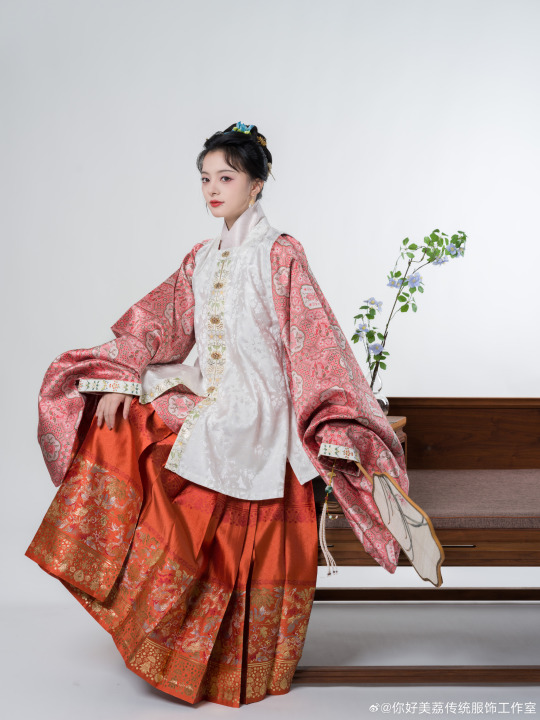


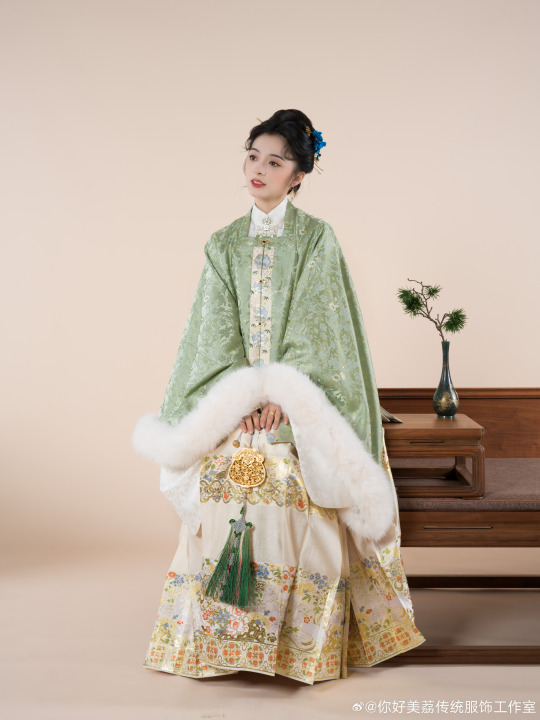









______
📸Photo:@你好美荔传统服饰工作室
👗Hanfu: @你好美荔传统服饰工作室
🧚🏻 Model :@阿时Ashi_
🔗Weibo:https://weibo.com/u/5698195062
_______
#chinese hanfu#Ming Dynasty (1368–1644)#hanfu#hanfu accessories#hanfu_challenge#china#chinese traditional clothing#chinese#漢服#汉服#中華風#hanfu girl#mamianqun#你好美荔传统服饰工作室#chinese style#chinese fashion#history#chinese art#chinese history#ancient china#Hanfu posture reference
149 notes
·
View notes
Text

tripod vessel with acrobats balanced on rim | c. 200 CE | china, possibly henan province
in the baltimore museum of art collection
100 notes
·
View notes
Text


Turquoise inlaid bronze dagger axe (ge polearm), China, Shang Dynasty, 1600-1050 BC
from Sotheby's
8K notes
·
View notes
Text
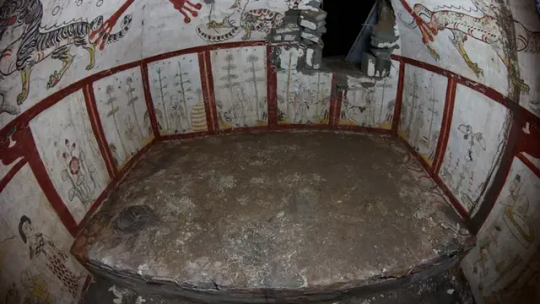

Stunning Tang Dynasty Murals in a Tomb Unearthed in China
A Tang dynasty tomb unearthed in China dates from the 700s, and the murals on its walls give an unprecedented view of daily life at the time.
Archaeologists in northern China have unearthed a centuries-old tomb decorated with stunning murals portraying daily life during the Tang dynasty, which ruled much of central and eastern China from A.D. 618 to 907.
The tomb includes never-before-seen depictions of daily life, including men threshing grain and making noodles.
One of the murals also depicts what appears to be a "Westerner" with blond hair and a beard who probably hailed from Central Asia, Victor Xiong, a professor of history at Western Michigan University who wasn't involved in the discovery, said in an email.
The tomb was discovered in 2018 during roadwork on a hillside on the outskirts of Taiyuan, the capital of China's northern Shanxi province, but archaeologists only reported on the completed excavations last month.
According to an article from China’s government-owned news agency Xinhua, an epitaph in the tomb states it was the burial place of a 63-year-old man who died in 736, as well as his wife.
The tomb consists of a single brick chamber, a door and a corridor. Scenes from life during the Tang dynasty adorn the walls of the tomb, the door, the corridor, and the platform on which the coffin was placed. The domed ceiling of the chamber is painted with what may be a dragon and phoenix.



Tomb guardians
Several figures painted near the door represent the "doorkeepers" or guardians of the tomb; they are wearing yellow robes and some have swords at their waists, according to Xinhua. Other murals portray natural landscapes, as well as men threshing grain, women grinding flour, men making noodles and women fetching water from a well.
They are rendered in the traditional "figure under a tree" style that was popular in the Shanxi region at the time, the South China Morning Post (SCMP) reported. As its name suggests, the style features people carrying out activities underneath beautifully depicted trees.
Many of the figures in the murals look like the same Chinese man and woman, and archaeologists think they may have been the two people buried in the tomb. The woman, in one scene, is dressed in a colorful gown and is leading four horses, alongside a bearded man holding a whip.
Other murals show mountains, trees and camels, and the series of paintings around the coffin may represent the Chinese tomb owner at different stages of his life, Xinhua reported.


Traditional style
The murals in the tomb appear to be well preserved. "The most familiar theme depicted in these murals is that of human figures under trees — a tradition that harks back to the Han dynasty [206 B.C. to A.D. 220]," Xiong said. Similar murals had been found in China's Xinjiang, Shandong, Shaanxi and Gansu regions.
He noted that the blond "non-Han" man leading camels has distinctive clothing. "Based on his facial features and outfit style, we can identify him as a 'Westerner,' likely a Sogdian from Central Asia," Xiong said. (The Sogdians were a trading people along the Silk Road routes between Asia and Europe at the time, living mainly in what are now Tajikistan and Uzbekistan.
He added that many of the murals gave "never-before-seen" representations of daily chores and labor during the Tang dynasty.
By Tom Metcalfe.
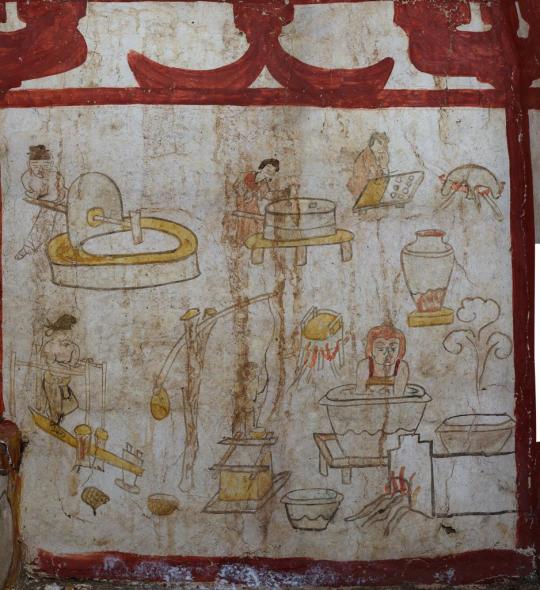


#Stunning Tang Dynasty Murals in a Tomb Unearthed in China#Taiyuan#Shanxi province#China#ancient tomb#ancient grave#ancient murals#ancient artifacts#archeology#archeolgst#history#history news#ancient history#ancient culture#ancient civilizations#ancient china#chinese history#chinese art#ancient art
553 notes
·
View notes
Text
Chinese Mythology: The Four Dragon Kings
Does anyone remember Ao Guang? Or the other three Dragon Kings? Or did anyone watch Ne Zha 2025?
You may then know of the Four Dragon Kings of Ancient China (四海龙王).
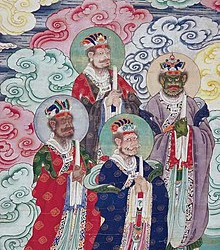
Historically all four of them are male- some recent adaptations will show one (or more) of them as female just for fun. China, even in ancient times, did not have four seas around it- the four dragon kings each correspond to a body of water in the cardinal directions.
Ao Guang
The big guy, Ao Guang, the Dragon King of the East, does have a “sea”: the East China Sea.
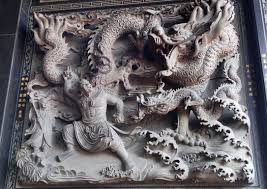
A carving of Ne Zha fighting Ao Guang (we all remember how that went, right?)
We know and love Ao Guang since he’s the one who got Ne Zha killed (after both he and his son got their asses beat) and is also the guy who gave Sun Wukong his mythical weapon, the Ruyi Jingu Staff (maybe will make a post on mythological weapons at some point).
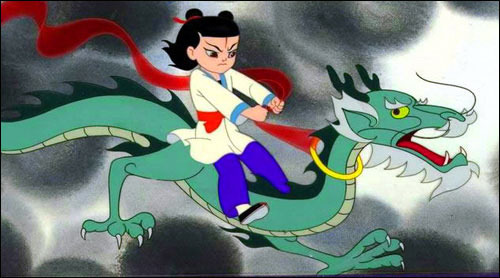
His third son, Ao Bing, is famous for getting his tendons plucked out by Ne Zha.
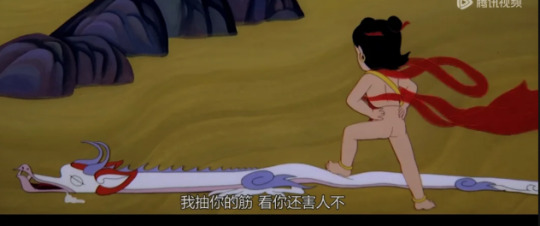
Subtitles: I'll pull your tendons out, see if you can still hurt anyone after this! (sorry for Ne Zha being kind of naked, he's a kid who was just taking a bath)
Ao Guang is the biggest, most powerful Dragon King.
In the Fengshen Yanyi (Investiture of the Gods post here), he’s a big dickhead who forces people to give him offerings or he’ll bring them drought and disaster. He’s very powerful, and is the leader of the Four Dragon Kings.
He’s also the sexy dragon dilf dad in Ne Zha 2.
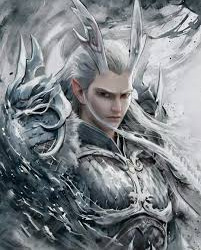
I just cannot get over this character design, oh my goodness.
Ao Run
Ao Run, pronounced Ow Rwen (also sometimes called Ao Ji) is the Dragon King of the West.
He does not have a “sea”: in fact, he rules over the biggest lake in China, Qinghai Lake. It’s big enough that we consider it a sea, I guess. It used to be considered an actual sea (like, connected out to the open ocean) probably because it’s huge, but it was probably never actually a sea.
Lake Qinghai has shrunk a lot. You can tell in this picture: right now it’s about the size of Trinidad.
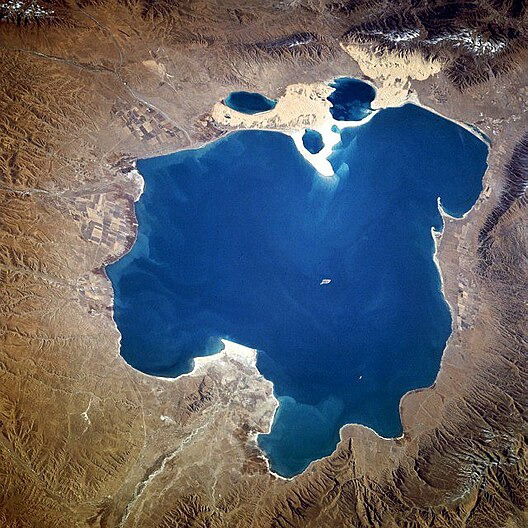
See all that dry land? Used to be lake.
It’s very blue, which is why it’s called Qinghai 青海 (blue sea). Qing generally refers to a bright blue-teal shade.
Ao Run’s son, Ao Lie, is the dragon that is sentenced to death by the Jade Emperor for setting fire to Ao Run’s palace accidentally and destroying a whole bunch of stuff. In the end, Guanyin Pusa spares Ao Lie’s life and sends him on the Journey to the West with Wukong, Tangsen, Zhu Bajie and Sha Wujing. You may recall that Tangsen had a big fancy white horse- that’s Ao Lie!
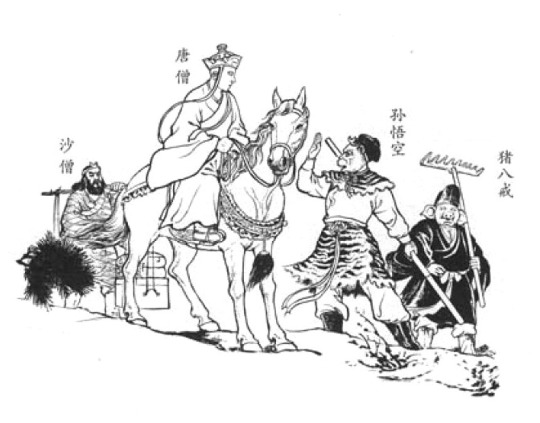
You may notice in this picture everyone else's names are labeled except for the horse. It's kind of sad- he's a little irrelevant.
A huge downgrade, from being a fancy dragon prince to a horse, but you can’t say he didn’t deserve it.
He's also featured in Fei Ren Zai (a very funny comic/animation series about mythical figures in modern-day also featuring Ne Zha, Wukong and Erlang Shen).
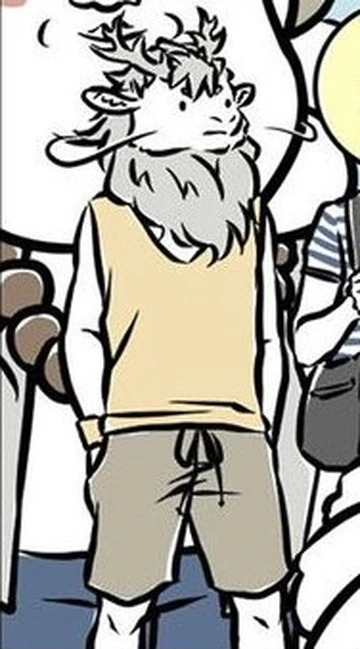
You may remember Ao Run from Ne Zha 2, 2025 as the sexy dragon lady with the killer sky-splitting manicure.
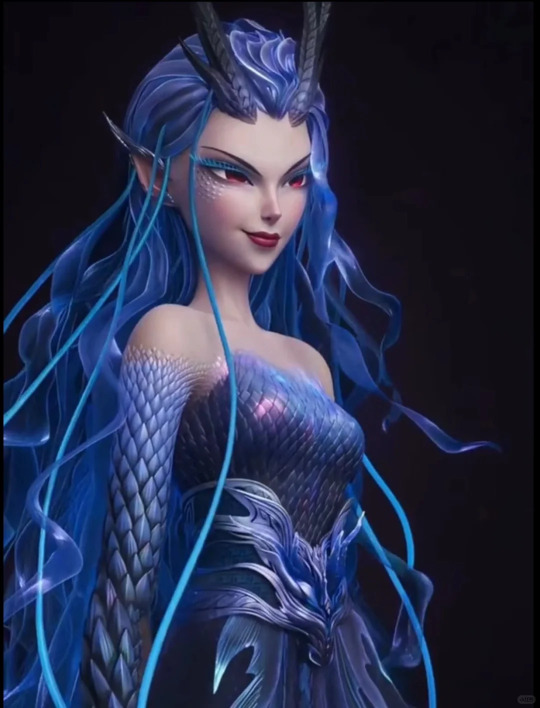
Sorry, she did things to me when I first saw her appear in her human form.
Ao Shun
Ao Shun, pronounced Ow Shwen, is the Dragon King of the North.
He also does not have a “sea”, like Ao Run. His patron body of water is what’s now known as Lake Baikal (Wikipedia better not fail me, I actually had no idea where the North China Sea was supposed to be).

Lake Baikal is the deepest lake in the world, it’s right up there in the south part of Siberia. North enough for you?
Back when the Han dynasty was fighting the Xiongnu (the Huns in Disney’s Mulan, basically), they beat the Xiongnu in a battle here. They saw this huge-ass lake, and decided they’d refer to it as the North China Sea. Lake Baikal is larger than Belgium. A little scary, no?
In Ne Zha 2, he was the freaky purple-green guy with blades all over his body. You may remember him fighting Ao Bing in a very exciting battle sequence. I’m not aware of any myths where he’s of any significance.
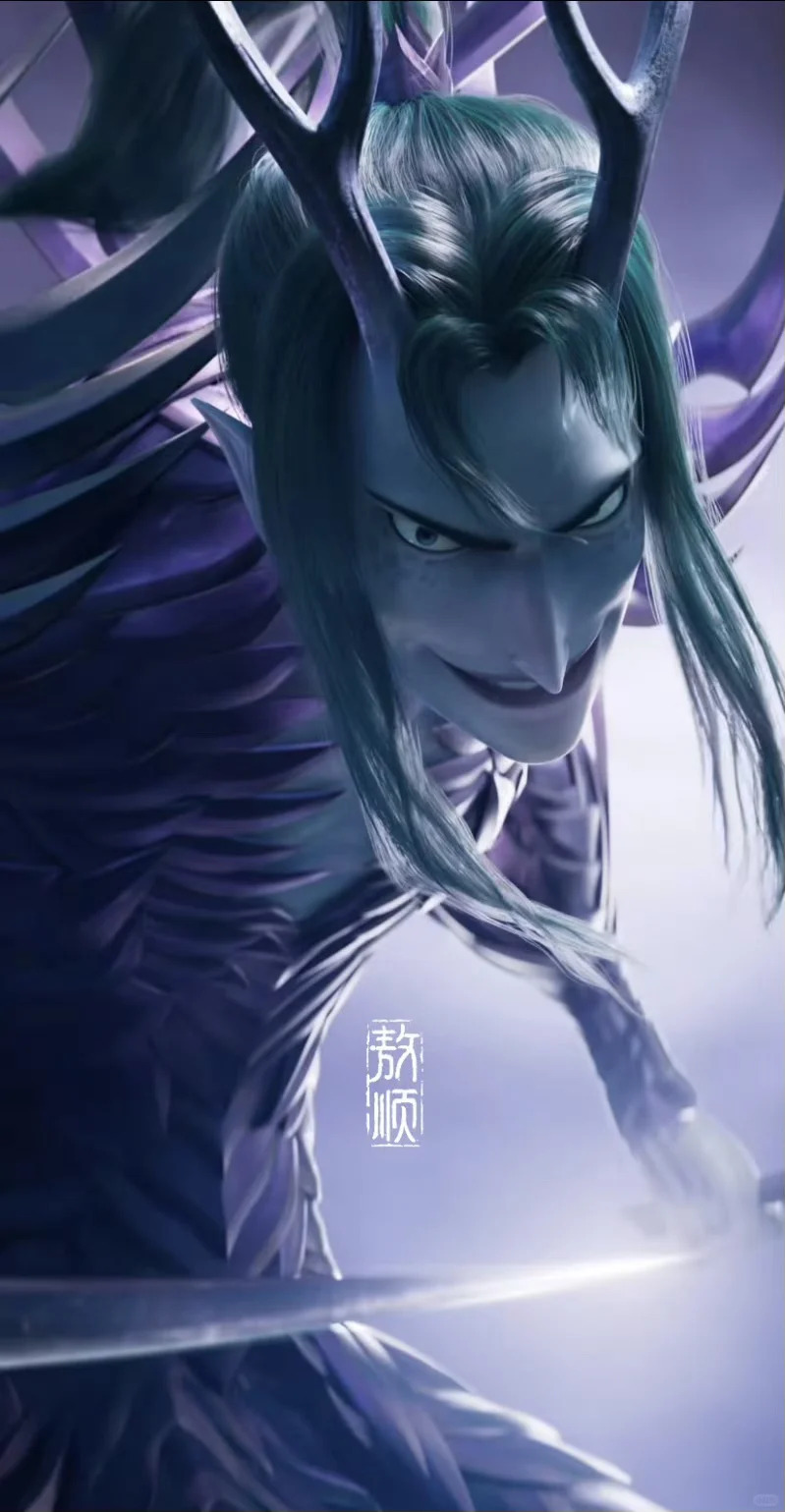
A hard pass. Sorry, second uncle. Your big brother and younger sister are much hotter.
Ao Qin
Ao Qin, pronounced Ow Chin (敖钦) is the Dragon King of the South.
The South China Sea of recent geopolitical tension fame is in fact a sea. Other than Ao Guang, he’s the only one with an actual sea. There’s not much to say about Ao Qin, he’s not that relevant.
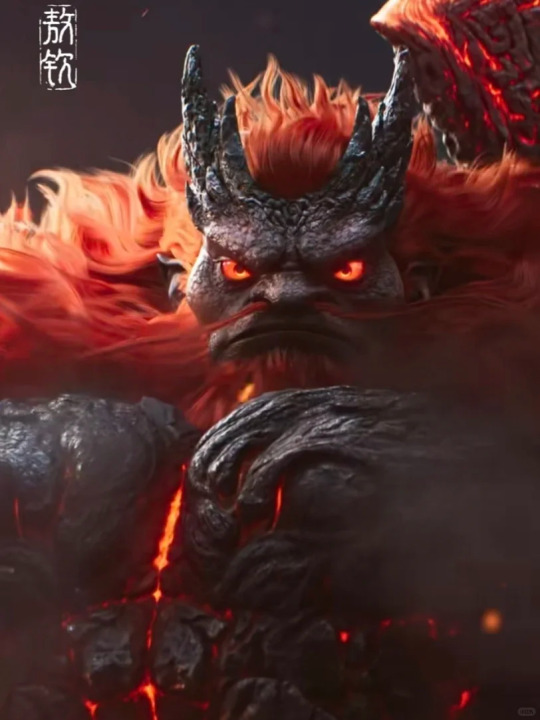
If you remember him from Ne Zha 2, he’s the big red one who’s dumb as bricks..
The Four Dragon Kings are really not that important aside from Ao Guang and Ao Run. Ao Guang is a key mythological figure- he appears in many myths, and is a semi-major character in Journey to the West.
Ao Run contributes mainly by giving Tangsen a horse in the form of his son. Poor Ao Lie.
In the 1979 Ne Zha Conquers the Sea, they are all seen briefly scheming with Ao Guang to go Karen-style and ask for the manager (Jade Emperor).

They're all siblings (since they have the same last name, Ao), with Ao Guang being the oldest brother. The order of ages past that is a little harder to figure out- from what I know, their ages are
Ao Guang
Ao Shun
Ao Qin
Ao Run
I actually don't know where Ao Run is in the ranking, I just know Ao Qin is younger than Ao Shun. As such, Ao Run could be either the youngest, the second youngest or the third youngest.
#ancient china#ao bing#ne zha#nezha 2019#nezha 2025#chinese animation#ne zha 2#chinese#chinese culture#chinese mythology#dragons#mythical creatures#mythology and folklore#china#ao guang
209 notes
·
View notes